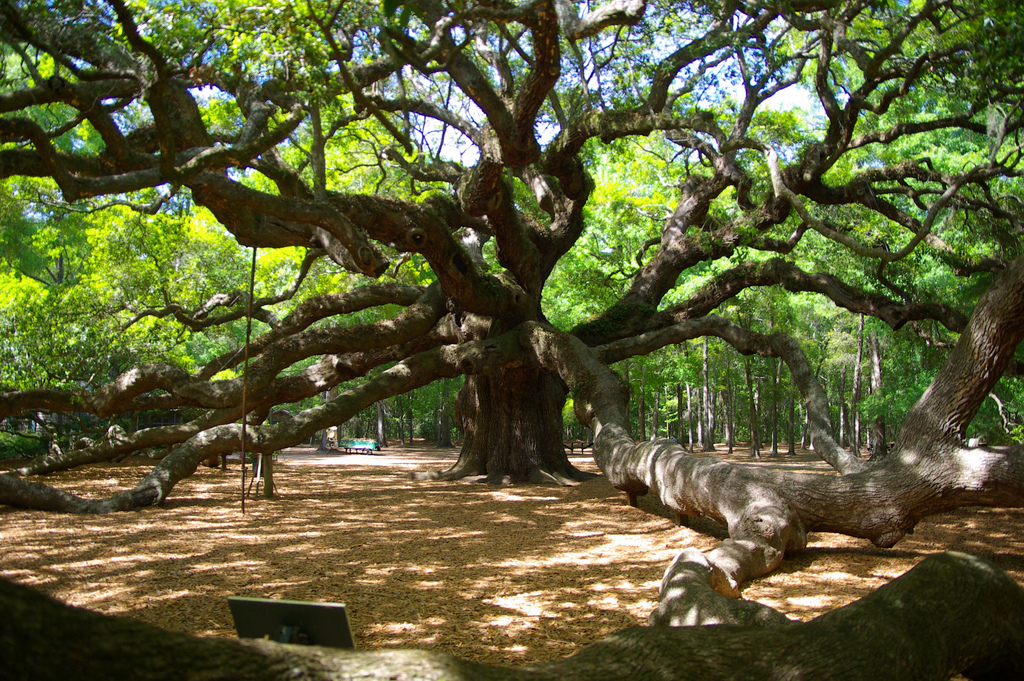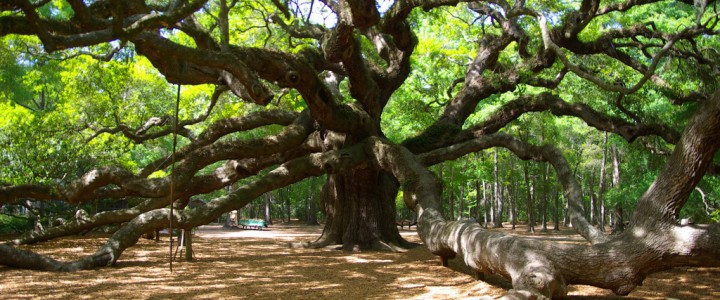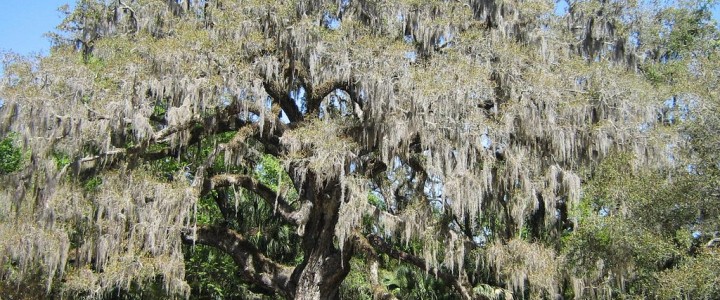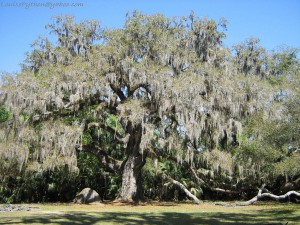The south comes to mind when one thinks about live oak trees. These classically beautiful trees with Spanish moss draped along streets with historic antebellum homes are unforgettable. Live oaks grow across the Southeastern United States.
They are found on the east coast from southeastern Virginia to Florida and west to southern and central Texas. The live oak tree grows predominantly in sandy soils of low coastal areas but it also grows in dry sandy or moist rich woods. It has a resistance to salty soil and salt spray from the ocean and does well on barrier islands.
Live oak is monoecious. This means that they have separate male and female reproductive units on the same plant. They produce flowers every spring from March through May and the acorns mature in September and fall off by December. Live oak acorns are long, dark brown to black and tapered. They are sweet and very popular with birds, squirrels and other animals. If the acorns fall on moist, warm ground, they will germinate soon after falling.
Live oaks do not get very tall, rarely above 50 feet but the crown or canopy of the tree can have a span of 150 feet. It is a very popular shade tree because of this. The wood of the live oak is very hard and strong and was used years ago for shipbuilding among other various wood making ventures. The wood is not used as widely today as it used to be because it is predominantly a shade and ornamental tree.
Live oaks have a tendency to grow in large, dense groups with interconnected roots systems, this is why you see them sprawling so closely to each other down many small town main streets across the south.
 If you are ever in the south near historic Charleston South Carolina, you will be surrounded by history. Once you have soaked up the architectural beauty and rich history of the city, head to nearby John’s Island to see the oldest living thing east of the Rockies. Known as the Angel Oak, the live oak tree that has its own park is estimated to be 1,500 years old, pre-dating Columbus by 1,000 years!
If you are ever in the south near historic Charleston South Carolina, you will be surrounded by history. Once you have soaked up the architectural beauty and rich history of the city, head to nearby John’s Island to see the oldest living thing east of the Rockies. Known as the Angel Oak, the live oak tree that has its own park is estimated to be 1,500 years old, pre-dating Columbus by 1,000 years!
Tucked into a wooded area the Angel Oak tree will simply astound you. Its quiet majesty shades the tiny park it dominates; it will be quite a while before you forget the 160-foot span of Angel Oak’s massive branches. Her circumference is a whopping 25 feet, and she covers 17,000 square feet of ground.
For more facts about the history of Live oaks and general informative information stayed tuned in. For now, I will say see you later, I have a picnic lunch date under a grand, old, shady friend; a live oak tree.


 The oldest Live Oak tree in Florida (pictured here) is thought to be in Ormond Beach, and is located in Bulow Creek State Park. This oak is called the “Fairchild Oak” and is thought to be over 400 years old. The oak has been a silent witness to human activities along Bulow Creek. According to the park this includes the destruction of the nearby Bulow Plantation during the second Seminole War in 1836.
The oldest Live Oak tree in Florida (pictured here) is thought to be in Ormond Beach, and is located in Bulow Creek State Park. This oak is called the “Fairchild Oak” and is thought to be over 400 years old. The oak has been a silent witness to human activities along Bulow Creek. According to the park this includes the destruction of the nearby Bulow Plantation during the second Seminole War in 1836.